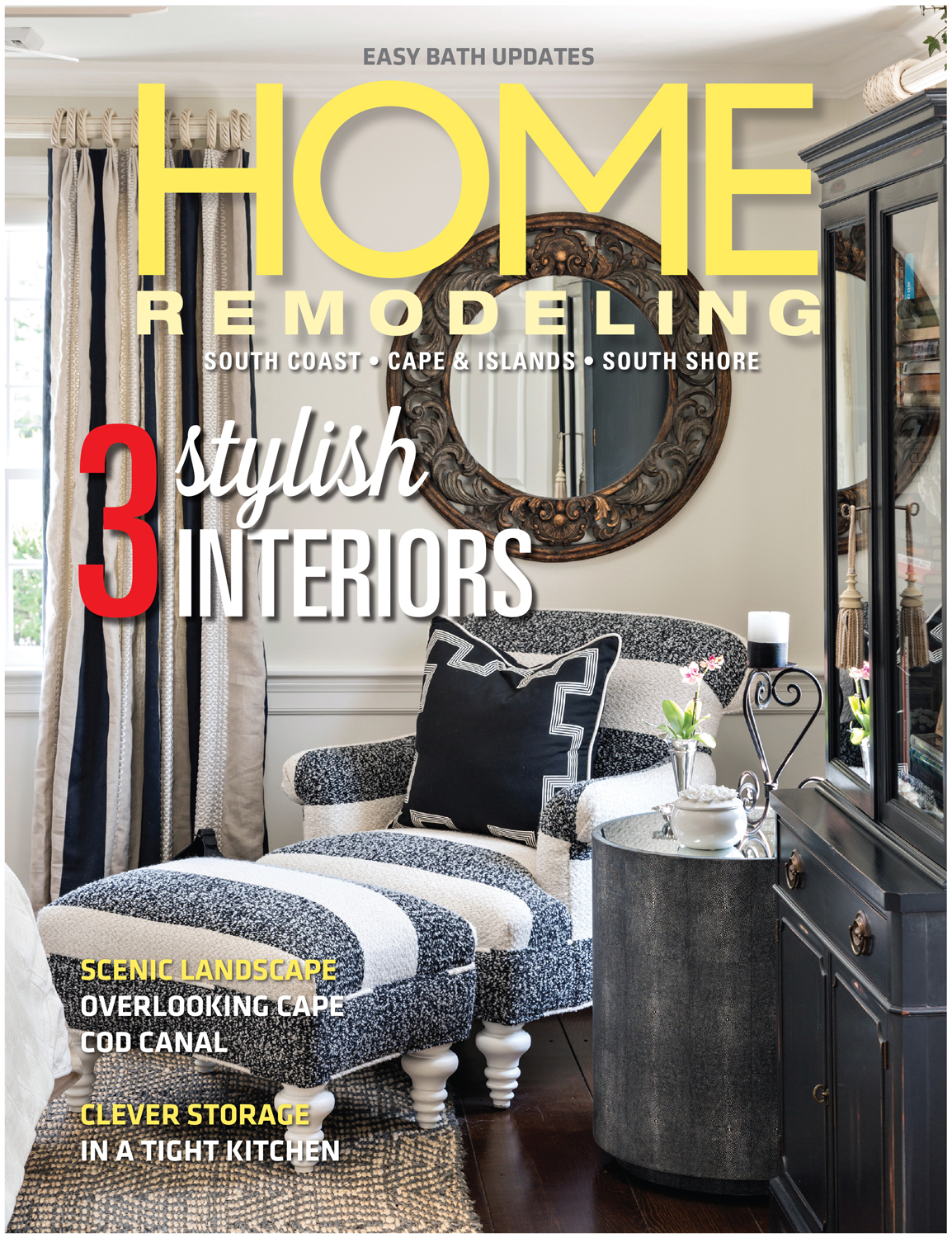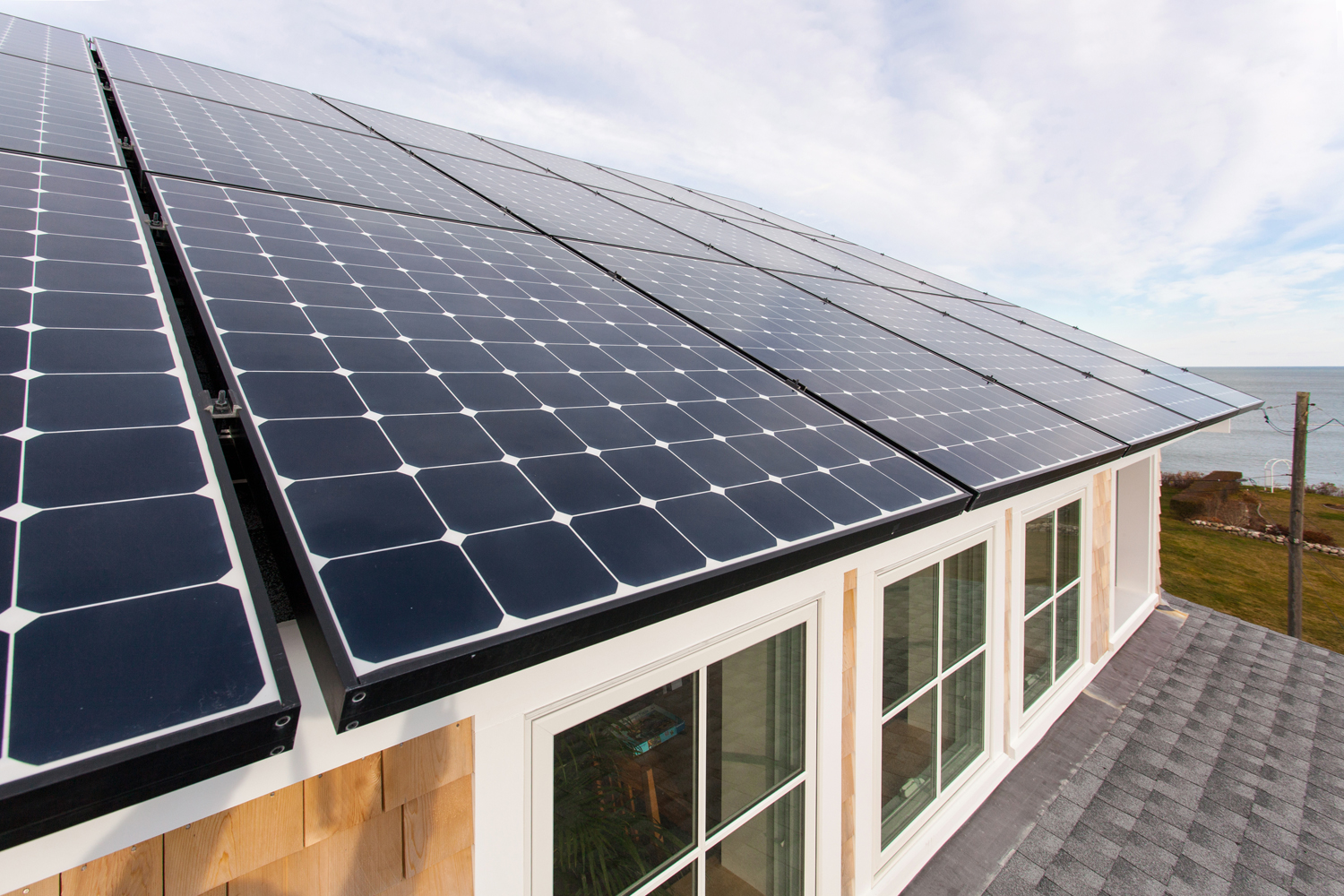In February of this year, we broke ground on a small affordable net-zero house. We are committed to making net energy zero work for all. The clients owned an 850 SF cottage in Eastham on a small lot. The cottage had no foundation so we demolished it.
The new design is for a 1780 SF house. The form is simple – again for affordability – 2 gables connected by a small connector piece. One wing houses the master bedroom and an open living/dining/living room. All rooms have south facing glazing for passive solar heating. The smaller gable consists of a garage and guest room, while the ‘connector’ contains mudroom/entry and guest bath. These simple forms allow the framing costs to remain minimal.
Some strategies when considering to cost effective ways to get to net zero:
Raised Heel Energy Truss
1. Truss roof
Instead of framing with convention lumber (typically 2x10s) this roof framing is designed to be a truss. There are many advantages to using trusses. One is affordability. They are installed easily in one day with a crane so there’s a major labor savings. Secondly, the truss consist of 2x4 and some 2x6 members so there’s a significant savings versus the 2x10 lumber which is good for costs and sustainability. Finally, these trusses are designed to allow 14-16” of blown in cellulose insulation so that are much more insulated than a typical roof especially
Triple Glazed Window and Double Framed Wall
2. Double framed wall
3. MA Energy Star Homes
4. Photovoltaic panels
We often use double wall construction when attempting to get to net-zero. We essentially double the amount of insulation. The only additional cost is extra cellulose insulation and some additional 2x4 studs. We are using
All of our new construction project participate in this worthy program. We work very closely with our HERs raters (www.energycodehelp.com) to energy model the initial design and then optimize the insulation/mechanical strategies. During construction, the HERs raters test the project for air tightness. Our goal is always tier 3, the highest level where there’s typically around $8,000 to $10,000 in rebates/incentives, as well as a tax credit.
To get to net-zero, we need energy production. The most effective way to do this is by adding solar panels. We are so lucky to work closely with E2 Solar (www.e2solarcapecod.com) on our projects from the beginning. WE evaluate for shading and production. Sunpower panels are the most efficient on the market and reliably make more electricity than we plan on.
4. Mini split heat pumps
5. Operating expenses
Since we are now making electricity on our roof, guess what we want to heat and cool with? Electricity! While gas can be efficient, we LOVE mini splits. These are small room sized split systems that provide heating and cooling. When we reduce the loads by adding insulation, we can heat and cool the entire house with one mini split. We often add others for reduncancy BUT talk about energy savings! We added insulation so that one mini split (cost $4000 installed) can heat and cool a small house. A typical house requires a new installed $30,000 fossil fuel heating system.
Most builders/architects create budgets based on construction costs, but we think it’s important to consider operational costs as well. What will you monthly energy costs be? WE can help project that with energy modeling! We look over the course of a year since we often find there’s surplus of electricity created in May & June (no heating or cooling loads, but long sunny days) that can be utilized in Dec. and January (high heating loads, low sun angle)
BlueskinVP 100 - tri-laminate polypropylene wrap
West Elevation of Net Zero Eastham House - Screen porch is framed and E2 Solar was on site yesterday preparing the roof and electrical service for solar panels
View of LIving Room - Double Framed Wall and Triple Glazed windows.
Raised Heel Scissor Truss
Triple Glazed Windows & framed Double Wall











































